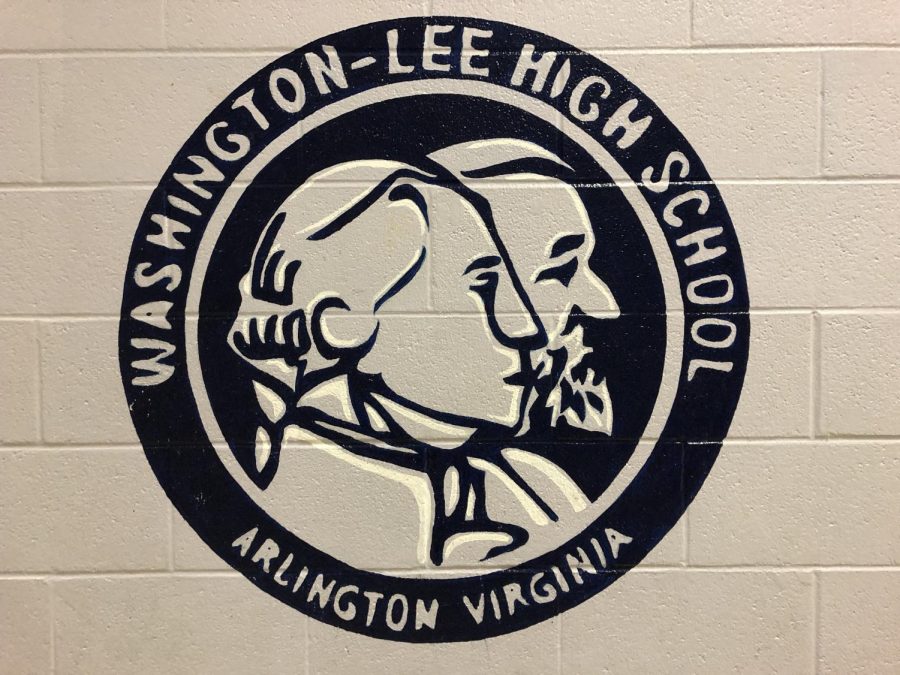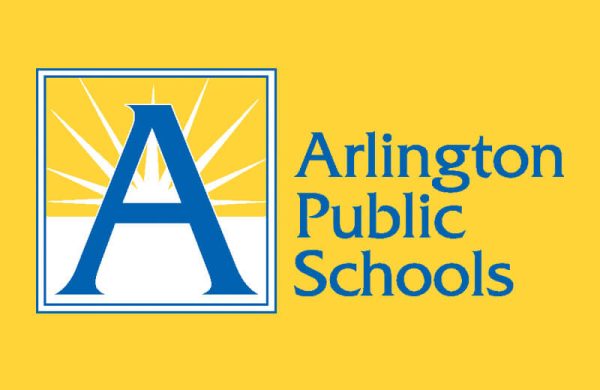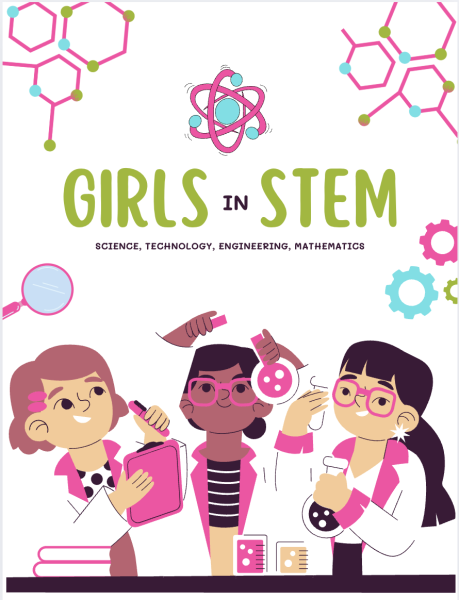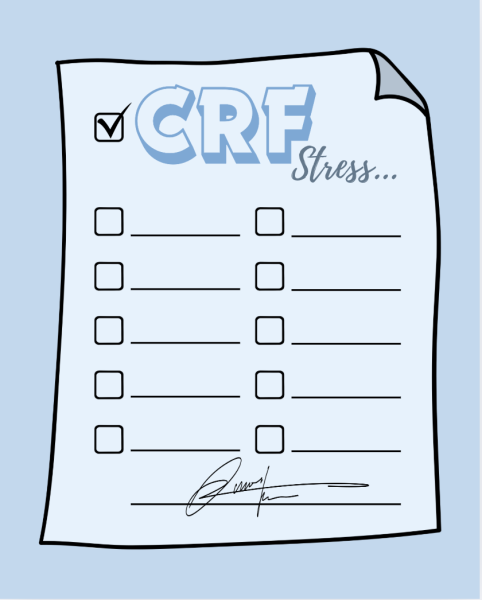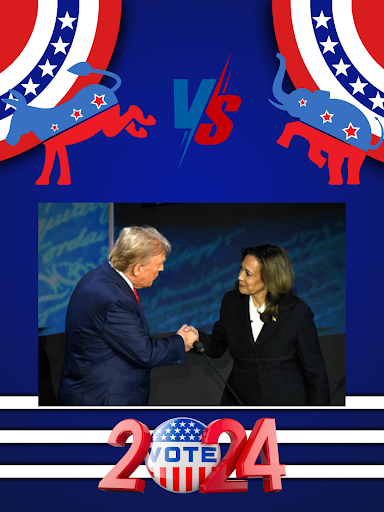Interview with Dean Fleming
As the process to change the name of the school progresses, the issue has proven divisive within Arlington. While some people in the school community believe that Robert E. Lee’s name should be removed from the school, others, like many alumni, are in favor of maintaining the name. When asked for a comment, the School Board maintained their position and the decision to begin the renaming process was appropriate but declined to elaborate. The Washington-Lee Alumni Association, on the other hand, is campaigning to keep the name of the school as it is. A section on their website is devoted to the cause and explains their reasoning. Dean Fleming, class of 1975, is the vice president of the alumni association and reached out to the Crossed Sabres to offer an exclusive interview where he discussed his thoughts on the name change both as an individual and as a representative of the alumni association.
Q: First of all, so you graduated in ‘75?
A: Yeah.
Q: Have you gone to any of the class reunions since then?
A: Oh, of course, yeah.
Q: And you still live in the area?
A: I’m like a nine-iron away from Arlington. I live on the Falls Church-Arlington border; I can pretty much hit a golf ball from my house to Arlington.
Q: Before I jump into it, this [the “KEEP the NAME the SAME” Shutterfly flyer] is something that’s been going around the school. I found this one here, there’s actually another one right up there; have you seen this?
A: Yeah, that’s something that one of the people in the alumni group put together, and then actually, is that with the magnet or no… there’s also magnets, too, that this one gal did, on Shutterfly.
Q: Why do you feel so strongly about the name change, and why do you think that other people in the community should as well, like particularly other students and alumni?
A: The heritage of Washington-Lee. The name was derived as you know from Washington and Lee University, but as a symbol of unity and reconciliation. But, you know, more importantly, I think the alumni’s perspective is prior to – I’ll start at the beginning, ‘cause all good stories start with “once upon a time”. So, once upon a time, prior to August of 2017, the School Board received two emails, written requests to change the name. Not 20, not 200, not 2,000, two. One of the gentlemen wants to change the name literally of everything in Arlington: roads, bridges, streets, parks, you name it. If it’s associated with the Confederacy or slavery, he wants to do that. The other gentleman wanted to change the name, but he wanted to change it possibly to Harry “Lighthorse” Lee. You know who Harry “Lighthorse” Lee is? A revolutionary war hero who fell on hard times, Robert E. Lee’s father, who fell on hard times, and I believe served some time in debtor’s prison, and at some point he left the country and left his wife and six kids to fend for themselves. So a great man in revolutionary war times, but a little bit of a tarnished history afterwards, certainly nothing equaling Robert E. Lee as a gentleman and a good person and whatnot, so that’s my opinion there.
Q: You mentioned the origins of the name. I don’t know if you saw; some alumni made an ad in the Sun Gazette supporting Audrey Clement where they mentioned the origins of the name of the school, but what does the name of the school mean to you?
A: I mean, to be honest with you, before the hubbub that was stirred up about it, it meant the high school I went to, not much more. When we went to school here, and I’ll preface this by saying the same thing the Jeb Stuart students, your world, you’re high school students and your world is right here. You’re thinking about homework and staying out of trouble and the weekends and getting ready for college, all those things. The name Washington-Lee was something to be proud of because it was considered as one of our alumni who wrote the article for the Sun Gazette, as he said, it was the “crown jewel of Arlington”. It was Arlington’s first high school, first integrated school, first or second within like days of each other with a school from Norfolk or Virginia Beach or something, graduated the first African American here, always been very open, very diverse. Even back in those days, schools coming up through Virginia, it’s always been symbolic of greatness and none of the evils associated with Jim Crow or any of the things that were evil. There were things that were done to blacks by people to poke at them, quite frankly, it was evil. The school is not one of them. But going to school here, you just, you get caught up in the school pride. You get caught up in the bonfires, which you guys probably don’t do anymore. Yeah, no bonfires. But I mean, you get caught up in basically the social atmosphere and your studies and your friends and your friendships and we crossed all boundaries back then. We didn’t have racial issues. Matter of fact, we did a FOIA just for fun with the Arlington County schools and said, “Can you please give us any incidents ever recorded regarding racial incidents.” and they came back [with] zero. And you go here, are you a senior or… you’re a junior, right? Where did you go to junior high school?
Q: I went to Gunston.
A: Okay, you went to Gunston – named after a slave plantation. Not that that means anything because I’m sure most people down there didn’t know that, but in any event, you know, and you might correct me if I’m wrong, but my perception here is that kids get along. The younger generation gets it, so the kids that are going to school now, they’re more empathetic racially, sexual orientation, with children with disabilities. You live it, you see it every day. I’ve not heard one student say otherwise. I haven’t heard one student say that there were racial incidents here or at J.E.B. Stuart. You guys just get along. I equate it to kids playing in the sandbox, and they’re all happy, they’re all getting along real well. And some adults start chirping in their ears and next thing you know we’ve got some racial tension or proposed racial tension. In Arlington here, there’s I am told by good friends of mine that manage the Black Heritage Museum of Arlington. One of them’s name is Carmella Hamm, that this is not a black-white issue, this is something being drummed up for, I’ll call it what it is, selfish political gain. This is why Barbara Kanninen drummed this up, it’s why she pushed it.
Q: Do you think that changing the name of the school would change that legacy?
A: Absolutely. Absolutely, I do.
Q: Why do you think so?
A: ‘Cause it is, it’s the legacy of the school, it’s the tradition, Arlington’s first high school. And I just have to drift back to the beginning, go back to the beginning: where is this coming from? Where is this coming from? Yeah, where is this push coming from? Prior to August of 2017, two emails. About 35 in the first, in the two months after Charlottesville, [which is] understandable. And two of the Board members on August 17 last year actually, after Barbara Kanninen made her statement “We at the School Board feel it’s time to revisit the names of all the schools in Arlington”, these two gentlemen, one was the vice-chair and the other one was James Lander, the African-American longest-serving Board member, both basically said “Pump the brakes. We don’t want to knee-jerk react here, we have a lot of other things to do, this isn’t that important.” Basically what they said, and it would be a good idea for you to watch the 8/17/17 video, like the first 15 minutes I think were Barbara makes a statement, these other two gentlemen make their statements. But again, where’s this coming from? If the community didn’t want it back then, and after Charlottesville, even right now we’re at 75-80% minimum who don’t want it. The alumni is like 90-some percent that don’t want it. Where’s this coming from? Where’s the push?
Q: So when you approached me about the interview, you said that “the School Board is rushing at breakneck speed to pick the new name” and that by doing that they’re violating the “detailed name selection process that they laid out”. So like in what ways are they violating that process, like specifically?
A: They basically in January, January 30 of this year, they revised their processing timeline for this name change. This was based on, were you aware of the George Mason study? Okay, George Mason University, their conflict resolution group was tasked with holding some minimal contact with the community, with students, with some staff and teachers to get their take on naming, it was always posted as “naming criteria”. The motive was always about coming after W-L, even though Barbara Kanninen said no one school should be singled out. It was always about that. So on January 30 they produced a revised document based on the community wanting, number one, to slow the process down, have much more community involvement, separate naming criteria for new schools from old schools. You know, moving forward all new schools should be socially-appropriate for the time that we live in. Does that mean we should go back and revisit the names of schools, roads, bridges, all that? The community basically said no to that. So they revised their process to extend it. Any vote, well the vote that took place June 7, if, after an ad-hoc committee of community, staff, students, alumni and whatnot, after that committee met over summer, and they returned like at the end of November of this year to the School Board a recommendation to either change the name or not to change the name, then they would proceed forward. So the vote they snuck in June 7 was not on the agenda, was not supposed to have been done if at all until December or January, their vote, the School Board vote. So that’s number one. The committee, the ad-hoc committee that they described in the January 30 document, they basically just trashed it. And that document also you can get. Have you ever been to any School Board meetings? You know how they do like a Powerpoint show, like a “Superintendent’s Update”? So they do an update. Well, in [the} February 15 and February 1 School Board meetings, I forget which one, they show this timeline and everything. So they’ve adopted the very detailed timeline process out of the January 30 revised process, they agreed to. And they all rah-rahed and said, “Boy, this is great. We’re gonna get more community involvement and everything.” And then we get the Powerpoint show that the Superintendent raised, so all this was going on right until June 7, and June 7 was supposed to have been, according to them, when they were going to talk about the naming criteria. Now there was supposed to have been more community engagement after the draft of that naming criteria had been submitted. That kind of got pushed to the side, too. So they voted on the naming criteria.


